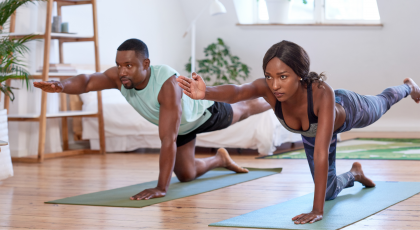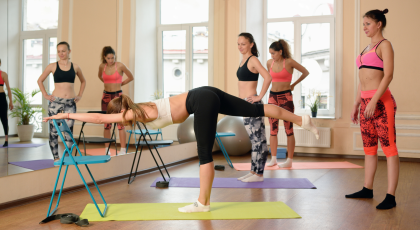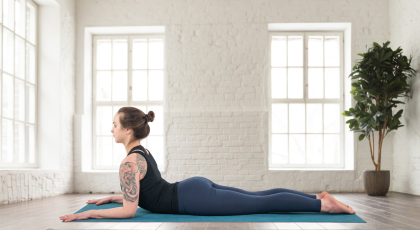View basket (0 items $0.00)
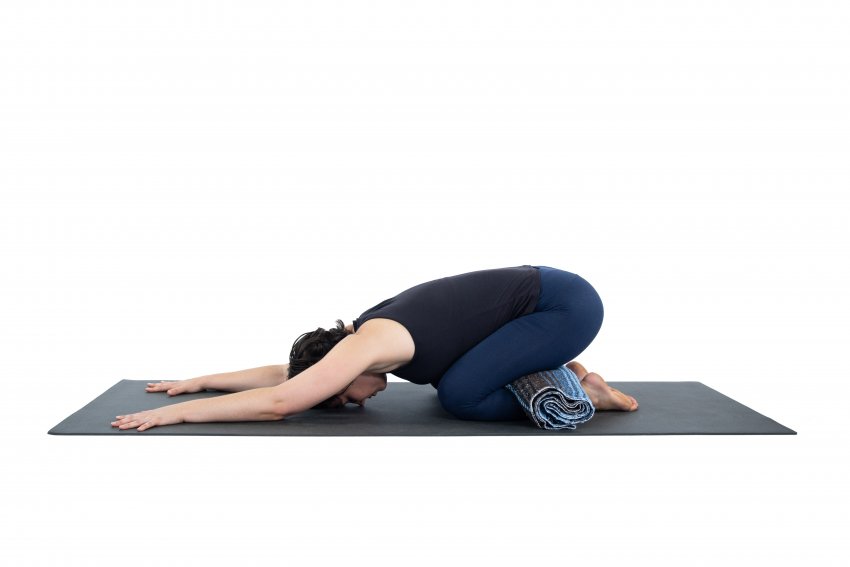
A Daily Yoga Sequence for Pelvic Pain
Pelvic pain impacts so many people. In fact, the International Pelvic Pain Society estimates that over 25 million women suffer from chronic pelvic pain. While the number is generally lower in men, some studies estimate that around 1 in 10 men experiences chronic pelvic pain, often termed chronic prostatitis. Because of the prevalence of pelvic pain, I’ve developed a movement sequence specifically geared toward relieving pelvic pain.
How to Get the Best Results from Your Yoga Practice
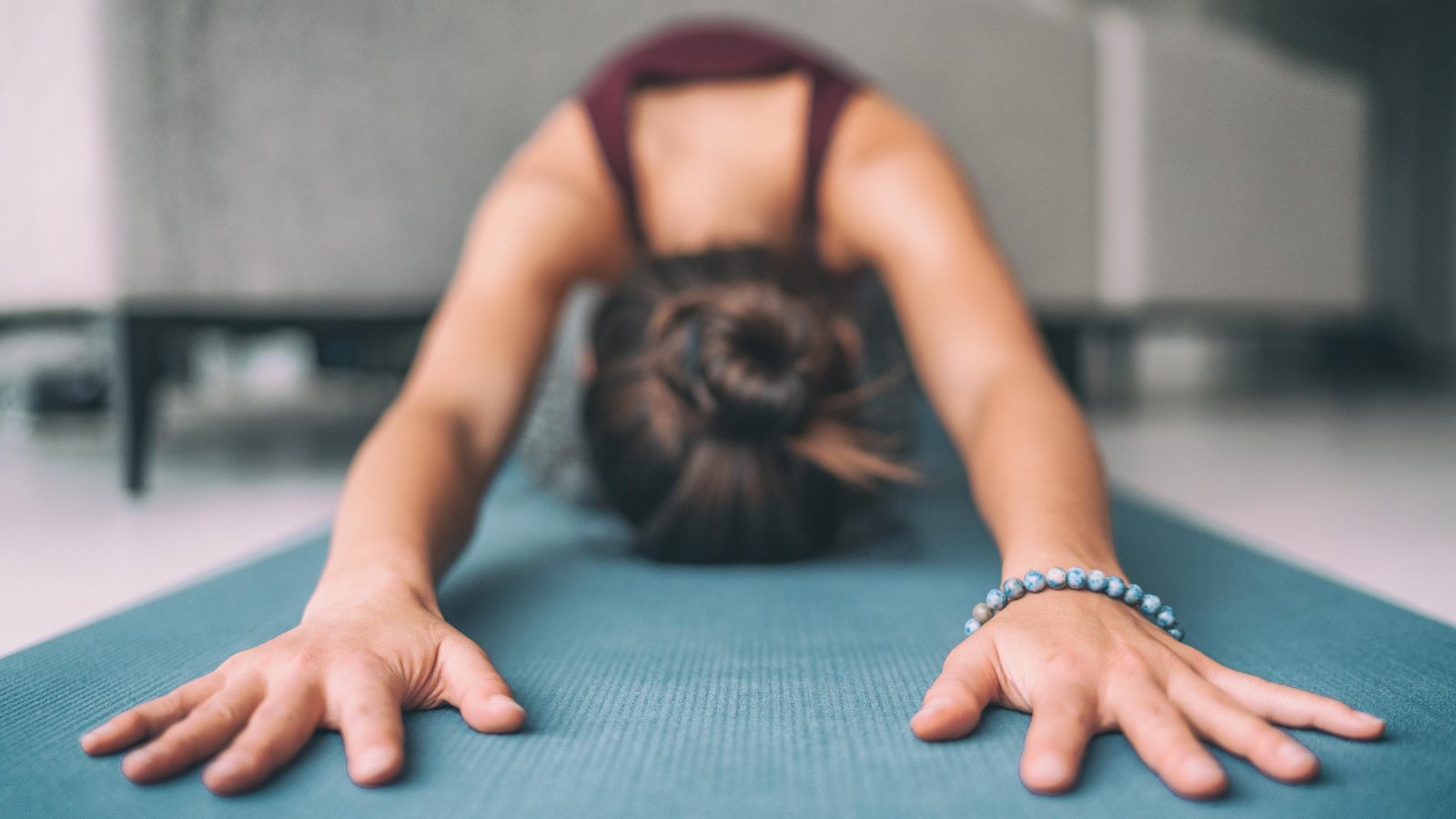
Before we get started, you should know a few things about pelvic pain. First, each person with pelvic pain is a unique entity. So while this sequence can feel lovely for many people with pelvic pain, some may not be quite ready for it. Others may find that doing it actually increases their pain (clearly, not our goal).
For rehabilitation for a person with pelvic pain, it is very important that exercises, movements, and activities are done at a threshold that does not increase or aggravate pain or discomfort. This is because we want to create positive movement neurotags for the brain.
Basically, we don’t want our brains to think that movement is harmful or dangerous, because as we all know, it should not be bad or dangerous! If we do movements that increase our discomfort and make us feel worse, the brain can build a connection between moving that way and bad/pain feelings. Instead, we should move at a threshold where the body does not guard or protect by creating pain.
So why am I telling you this? Because, if you start doing these movements and your symptoms worsen, or it doesn’t feel therapeutic to you, you need to stop doing the practice and see a pelvic floor therapist. They can evaluate you comprehensively and help you develop a specific movement plan that is therapeutic for you.
Remember that anything on this blog is not in any way a replacement for in-person care. You need to consult with your interdisciplinary team (your physician, physical therapist, etc.) to determine the best approach for your health!
How to Relieve Pelvic Pain with Yoga
So let’s break down this sequence.
Diaphragmatic Breathing
If I could give any person with pelvic floor problems a single exercise to do, it would be this. The breath is so powerful and synced with the pelvic floor. For diaphragmatic breathing, you want your breath to move into your belly, expand your ribcage in all directions, then lift your chest.
A misconception of diaphragmatic breathing is that the chest should not move at all. This is false. The chest should lift, but so should the ribcage and the abdomen.
-
You can do this in sitting or lying down, preferably in Constructive Rest Position (lying on your back with your knees bent and the soles of your feet on the floor).
-
As you inhale, aim to lengthen and relax your pelvic floor muscles.
-
Then exhale, allowing your muscles to return to baseline.
-
Start your sequence with 2-5 minutes of this breathing, and toss in some focused relaxation of each part of your body while you’re doing it!
Happy Baby Pose (Ananda Balasana)
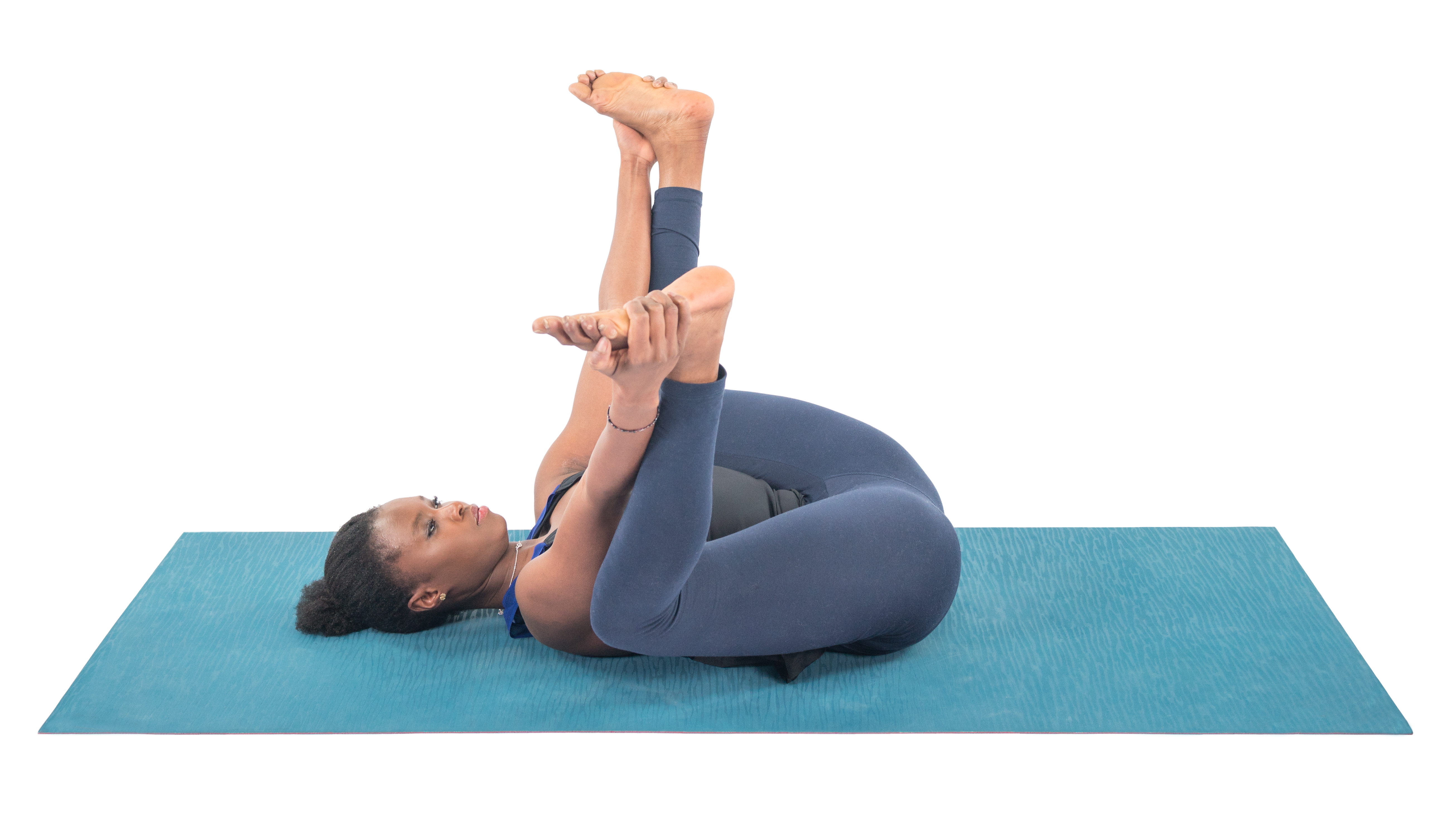
Happy Baby Pose is a key movement for anyone with pelvic pain. It is a great position for relaxation and lengthening of the pelvic floor.
-
Lie on your back and bring your knees up to your chest.
-
Reach your arms through your legs to grab your lower shins. Support your legs using your arms, and allow your knees to drop open. You can alternatively hold your legs at your thighs, depending on your comfort and your hip mobility. From here, aim to let go of muscle tension.
-
Take slow breaths, directing your breath to lengthen and open your pelvic floor muscles.
Segmental Bridge Pose (Setu Bandha Sarvangasana)

This is a nice movement to warm up your spine and practice using small amounts of tension to perform a graded movement.
-
Lie on your back with your knees bent.
-
Then inhale to prepare, exhale and slowly begin to roll up off the mat, lifting your tailbone, then sacrum, then low back, then mid-back, then shoulder area.
-
At the end of your exhalation, slowly inhale, reversing the movement.
-
You can repeat this 5-15 times, and do 1-3 sets. Vary this based on what feels healthy and helpful to you.
Sometimes people get back pain when they do this, usually because their back muscles are trying to do the job of the glutes. If this happens, try to bring your feet closer to your buttocks and press through your feet while you are lifting. If it still happens, stop the exercise, and talk to your physical therapist.
Revolved Belly Pose (Jathara Parivrttanasana)

-
I love this exercise for improving the mobility of the upper back (thoracic spine).
-
Lie on your side with your knees and hips bent to 90 degrees, arms stacked in front of you at shoulder level.
-
Inhale, reaching your top arm forward. Then exhale and slowly roll your hand across your chest, opening to the opposite side.
-
Pause here and inhale, letting your ribcage expand. Then exhale, letting the hand glide across your chest to meet the opposite hand again.
-
Repeat this movement 5-10 times on each side. You can do a few sets if you would like!
Cat-Cow Pose (Marjaryasana-Bitilasana)
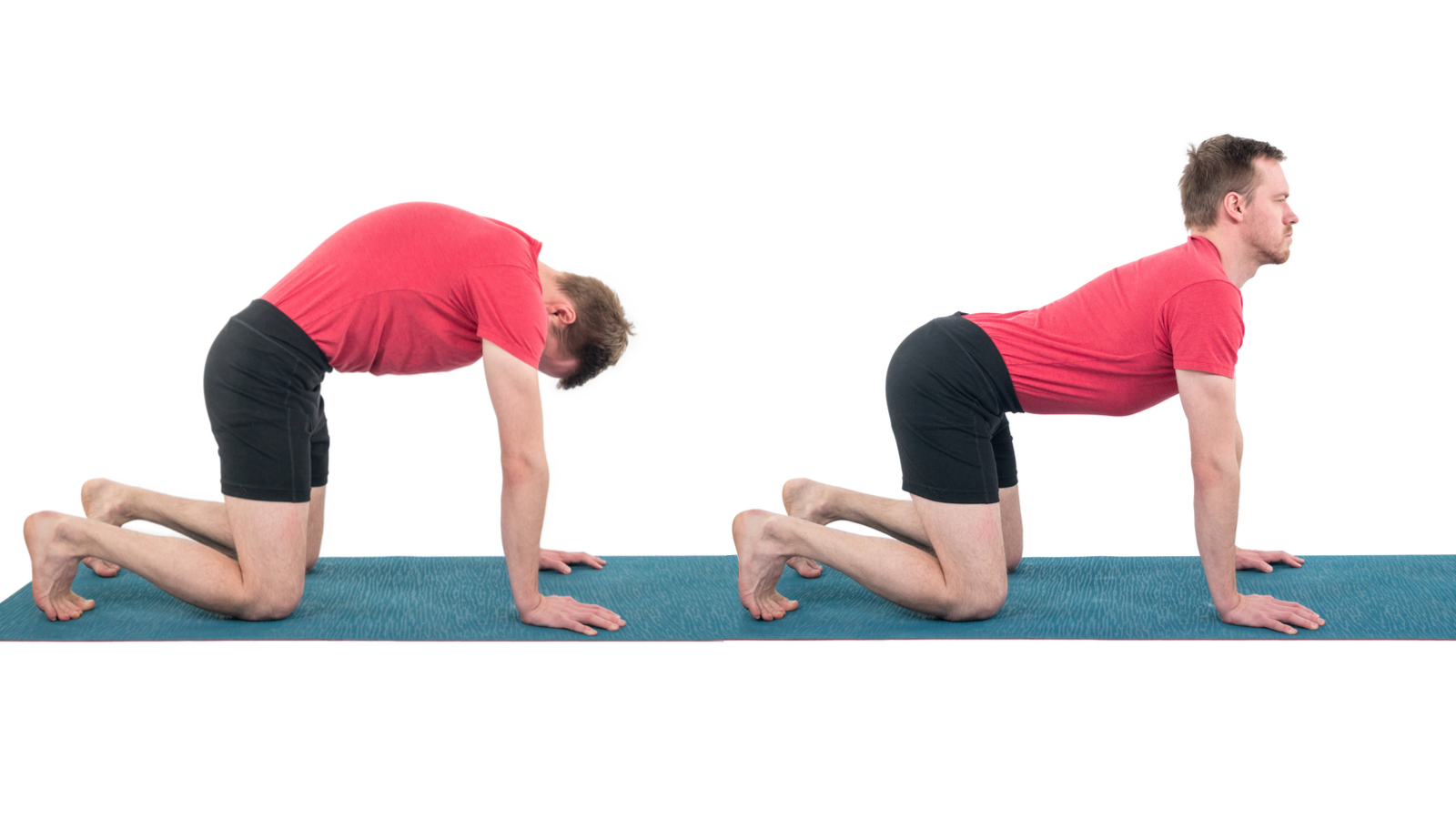
This is another one of my top exercises. I love Cat-Cow Pose, as it promotes segmental mobility of the lumbar and thoracic spine into flexion and extension. It is another great movement to encourage minimal tension, and coordination of breath, so it’s a big favorite for people with pelvic pain.
-
Start in Tabletop Pose (Bharmanasana), on hands and knees, with hands aligned under shoulder and knees aligned under hips.
-
Inhale, allowing your tailbone to come up and your back to dip down, head looking up.
-
Exhale, dropping your head down, rolling your back up, and tucking your tailbone.
-
Perform these movements slowly, using small amounts of tension.
-
Repeat this 10-15 times, two sets. You can alternate each set with Child’s Pose (Balasana), the next pose in the sequence.
Child’s Pose (Balasana)

Child’s Pose is a beautiful exercise that encourages the opening and lengthening of the pelvic floor muscles. It is nice to practice it between sets of Cat-Cow. I like to modify this slightly by bringing the knees into a wide position to further encourage relaxation of the pelvic floor muscles.
-
Begin in Tabletop Pose. Open the knees into a wide position, further than hip-width apart, keeping your feet together.
-
Drop your pelvis back toward your feet, reaching your arms forward and relaxing down toward the mat. You can use a pillow (or two pillows!) to support your trunk so that your Child’s Pose is not quite as deep.
-
Hold this position, making sure you are totally comfortable, for 60-90 seconds, breathing in long, slow breaths, encouraging lengthening and opening of your pelvic floor.
-
Repeat this two times, preferably interspersed with the Cat-Cow exercise.
Reprinted with permission from Jessica Reale, PT.
 Dr. Jessica Reale is a Doctor of Physical Therapy (DPT) and Board-Certified Specialist in Women’s Health (WCS). She has specialized for over 10 years in working with all people with pelvic floor dysfunctions and owns a private practice, Southern Pelvic Health, in the metro Atlanta area. Jessica has advanced training in the evaluation and treatment of urinary and bowel problems, sexual dysfunction, prenatal and postpartum concerns, complex pelvic pain disorders, and much more. She is a faculty member and curriculum developer with the Herman & Wallace Pelvic Rehabilitation Institute and teaches within the Pelvic Floor Series and Perinatal Series to other health care providers across the country.
Dr. Jessica Reale is a Doctor of Physical Therapy (DPT) and Board-Certified Specialist in Women’s Health (WCS). She has specialized for over 10 years in working with all people with pelvic floor dysfunctions and owns a private practice, Southern Pelvic Health, in the metro Atlanta area. Jessica has advanced training in the evaluation and treatment of urinary and bowel problems, sexual dysfunction, prenatal and postpartum concerns, complex pelvic pain disorders, and much more. She is a faculty member and curriculum developer with the Herman & Wallace Pelvic Rehabilitation Institute and teaches within the Pelvic Floor Series and Perinatal Series to other health care providers across the country.
Additionally, she authors a blog on pelvic health topics at www.jessicarealept.com, and is a regular contributor to the blog at YogaU. Jessica is a student of Yoga and has a deep appreciation of the benefit that a yoga practice can have in helping people find healing from their pelvic health challenges. She is also passionate about educating people in the community, and partners with Dr. Sara Reardon of “The Vagina Whisperer” to provide regular online classes and workshops. For additional information about Jessica, view her personal website at www.jessicarealept.com or her clinic website at www.southernpelvichealth.com.
Featured Courses
